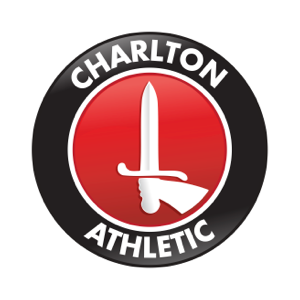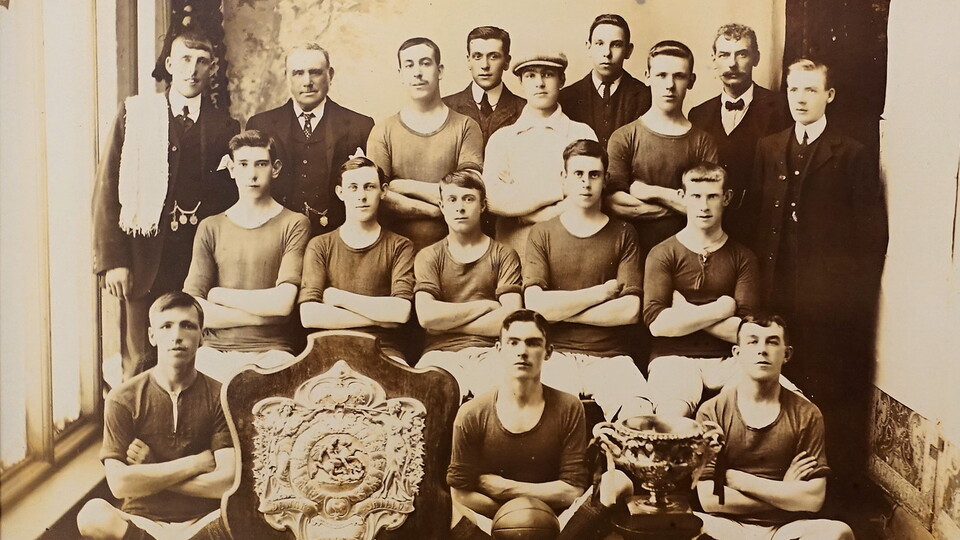1905-1923: The Early Days
1905: Club formed
It all began close to the River Thames in East Street (now known as Eastmoor), which today lies between Woolwich Road and the Thames Barrier. On June 9th, 1905, a group of teenagers who once kicked a ball around that very street decided to get together and form a fully-fledged football club that was to become Charlton Athletic.
With the famous red and white chosen as the colours, kit was made up from a drapery store in Woolwich and a home was established half a mile from The Valley, again close to the Thames, at Siemens Meadow, adjacent to the old Siemens telegraph factory, which is now covered by warehouses. With an average age of 15-and-a-half, the team looked to set up their first matches.
The secretary, Jim McKenzie, of York Street, Charlton, put out newspaper adverts to find opponents for friendly fixtures and the club’s first ever documented match came against Silvertown Wesley United, who made the short journey from the north side of the river on December 22nd, 1905. Charlton ran out 6-1 winners with the Kentish Independent reporting that: “Silvertown were beaten and outclassed in every department.” That very first, historic Charlton team lined up as follows: King, Slicox, Thomas, Burns, Marshall, Sudds, Bonner, Crawford, Jarvis, Lines, Mills.
1906: Entered Lewisham League
Charlton entered a competitive competition for the first time by joining Lewisham League Division Three and won it in their first season with a record of 17 wins and a draw from their 18 matches played.
During the club’s formative years, Charlton set up camp at a number of different grounds. From Siemens Meadow, the club moved briefly to Woolwich Common, then Pound Park which is situated just off Charlton Lane, and then the Angerstein Athletic Ground, just off Horn Lane by the approaches to the Blackwall Tunnel.
The numerous moves in the early years did not hinder the club’s success, as Charlton won 20 trophies over their first nine years of junior football and celebrated promotion to the Lewisham League First Division in 1908, before winning it in 1909. Progress would be further helped by nearby club Woolwich Arsenal’s decision to uproot from Plumstead in 1913 and move to North London, leaving Charlton as the only local team in the area.
1919: Charlton move into The Valley
Following the First World War, Charlton finally found a fitting home, moving into, what would soon be known as, The Valley.
Then known simply as ‘the swamps’, the area was a derelict sand and chalk pit.
Although it formed a natural bowl, there was not quite space for a football pitch until a team of volunteers armed with shovels dug out what would become the famous Valley pitch. Amongst the volunteers was the grandfather of future Charlton legend Brian Kinsey and the turf was well prepared in time for the first ever game to take place at The Valley on September 13th, 1919.
With the ground essentially consisting of just a roped-off pitch, Charlton’s ‘A’ team beat Summerstown 2-0 in the South Suburban League on that day, while the first team had won election to the Kent League, playing their first game in October.
1920: Club turns professional
Although Charlton’s application to join the Isthmian League was turned down, it turned out to be a positive twist of fate, with the club eventually turning professional in June 1920.
At a club meeting which took place at the Antigallican pub at the bottom of Charlton Church Lane, a debate ensued between those who wanted Charlton to become the top amateur side in the country and those who wanted to go full time. Eventually, the motion was passed and the club joined the Southern League.
1921: Elected into the Football League
Just one year after turning professional, Charlton were elected into the Football League Division Three – South under manager Walter Raynor. The first senior match took place on August 27th, 1921 with the Addicks beating Exeter City 1-0 at The Valley in front of 13,000 thanks to Tommy Dowling’s winning goal.
1922: First main stand built
Construction of The Valley’s first main stand was completed in the form of the distinctive old West Stand at a cost of nearly £20,000.
1923: Giant killers and Catford experiment
The name of Third Division Charlton Athletic was thrust into the conscious of the nation when they became the FA Cup’s original ‘giant killers’, beating three First Division teams in the competition before the run finally came to an end in the quarter-finals.
A 2-1 win away at Manchester City in the first round was followed by a 2-0 victory at home to Preston North End in round two.
The third round saw 31,489 witness Charlton beat West Bromwich Albion 1-0 at The Valley to become the first ever Third Division side to reach the last eight.
Eventual winners Bolton Wanderers brought the giant-killing spree to an end in front of a then-record Valley crowd of 41,023.
Soon after the cup run, attendances dropped and with the club facing financial difficulties, the decision was made to move away from The Valley to Mountsfield Park in Catford.
The move saw Charlton’s playing activities amalgamate with Catford Southend, with the team changing colours to dark and light blue stripes.
After six months, however, the experiment had failed and Charlton were to return to SE7 to their rightful home of The Valley.

